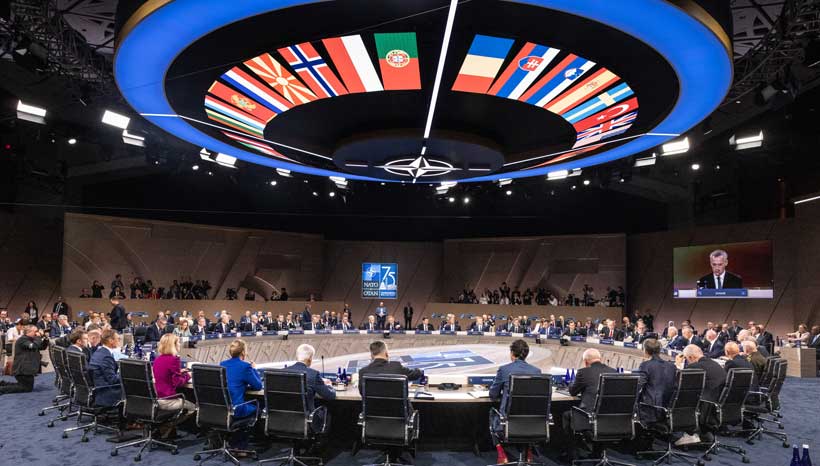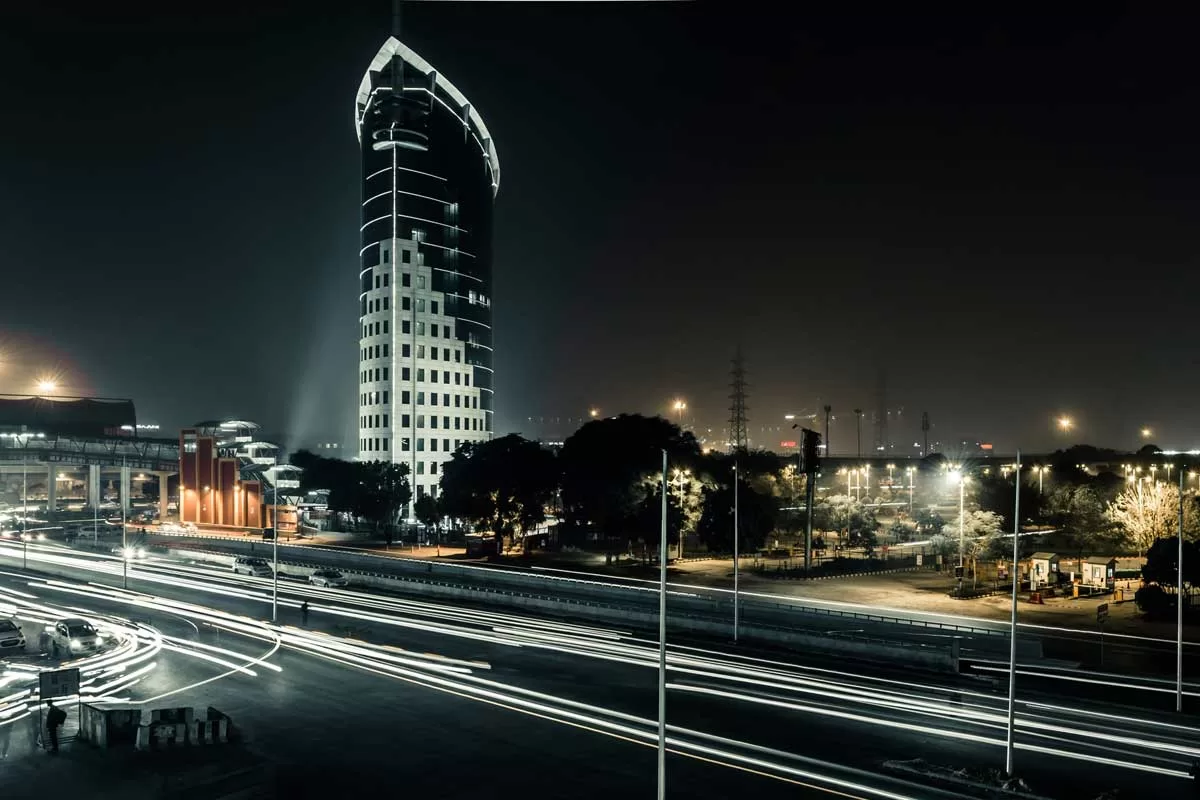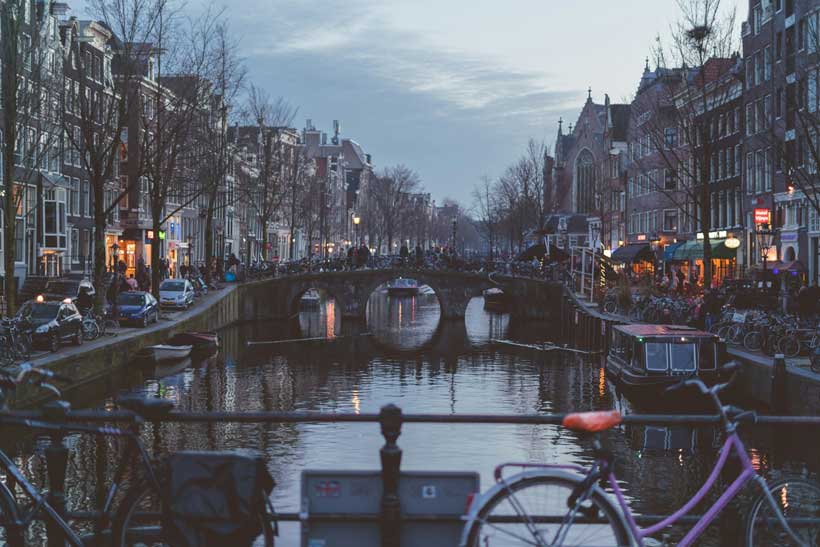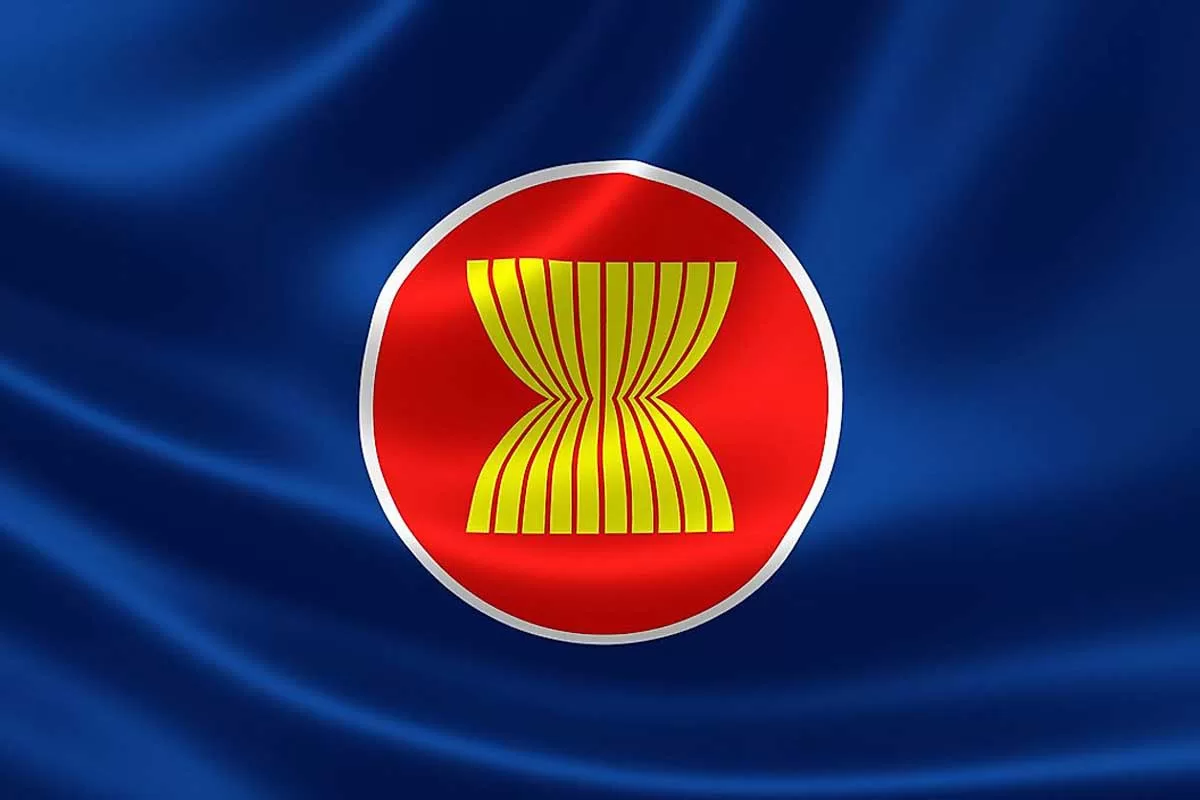Why India Must Align Exports with Foreign Policy Before It’s Too Late
As I write this in 2025, I find myself increasingly concerned about India’s manufacturing trajectory. While India celebrates digital prowess and service sector dominance, a stark reality confronts my country: our manufacturing exports as a percentage of global trade have remained stubbornly stagnant at around 1.7%, even as China commands over 15% and Vietnam has surged to capture significant market share in textiles, electronics, and manufacturing.
The time for incremental reforms has passed.
India needs a comprehensive overhaul of its export and entrepreneurship policies, strategically aligned with foreign policy objectives, to prevent what I believe could be a permanent relegation to service sector dependency while manufacturing opportunities slip away to more agile competitors.
The Manufacturing Imperative
The numbers paint a sobering picture. China’s manufacturing value-added reached $4.9 trillion in 2023, accounting for roughly 30% of global manufacturing output.
Vietnam, with a population less than 7% of India’s, achieved manufacturing exports of $370 billion in 2023, compared to India’s $450 billion total merchandise exports across all sectors.
More critically, India’s share in global manufacturing exports has declined from 1.8% in 2019 to 1.7% in 2024, while Vietnam’s share grew from 2.1% to 3.4% in the same period.
This isn’t just about absolute numbers; it’s about momentum and trajectory.
Countries like Bangladesh, Mexico, and Turkey are all gaining ground in manufacturing exports while India debates policy frameworks.
The demographic dividend we often celebrate is actually a ticking time bomb. With 12 million Indians entering the workforce annually, service sector jobs alone cannot provide sufficient employment. Manufacturing historically creates 3-4 jobs for every direct job, compared to 1.5-2 jobs in services. Without a manufacturing renaissance, we risk social instability and economic stagnation.
The Export-Foreign Policy Nexus: Learning from Successful Models
My analysis of successful export economies reveals a crucial insight: export policies cannot operate in isolation from foreign policy. China’s Belt and Road Initiative isn’t just infrastructure investment; it’s export market creation. Vietnam’s export success stems partly from its strategic positioning between US-China tensions, attracting supply chain diversification.
India needs to reimagine its foreign policy through an export lens. Our current approach treats trade and diplomacy as separate domains, resulting in missed opportunities. For instance, our Act East Policy has yielded modest results in manufacturing exports to ASEAN, partly because we haven’t aligned trade facilitation with diplomatic priorities.
Consider this data point: India’s bilateral trade with Africa was $98 billion in 2023, but only 25% consisted of manufactured goods exports. China’s Africa trade was $282 billion, with 45% being manufactured exports. This disparity isn’t just about market access; it reflects China’s systematic alignment of diplomatic engagement with export promotion.
The Compliance Raj: Quantifying the Regulatory Stranglehold
Our current export promotion architecture suffers from what I call “scheme fatigue,” but the deeper malady is what recent analysis terms the “Compliance Raj”—a” systematic regulatory stranglehold that makes Vietnam and China look like libertarian paradises by comparison.
The numbers are staggering: India experienced 9,420 compliance updates in 2024 alone, averaging 36 daily regulatory changes. To put this in perspective, Vietnamese manufacturers face approximately 12 major regulatory updates annually, while Chinese exporters operate under relatively stable regulatory frameworks with predictable annual changes.
The India Business Corruption Survey 2024 reveals that 66% of businesses admitted to paying bribes, with 54% coerced for permits, licenses, or approvals. This isn’t just about corruption; it’s about competitive disadvantage. While Indian exporters navigate bribery demands and regulatory uncertainty, Vietnamese competitors focus on production efficiency and market expansion.
The Production Linked Incentive (PLI) scheme, while well-intentioned, allocated $26 billion across 14 sectors over five years. China spends more than this amount annually on manufacturing subsidies and export promotion. Vietnam’s foreign direct investment in manufacturing reached $22 billion in 2023 alone, compared to India’s $15 billion across all sectors.
The bureaucratic maze compounds these challenges beyond previous estimates. Businesses are required to manage 23 different identity numbers, including PAN, GSTIN, and CIN, resulting in excessive paperwork and frequent renewals.
A recent study by the Confederation of Indian Industry found that compliance costs for Indian exporters are 23% higher than Chinese competitors and 31% higher than Vietnamese exporters. But when we factor in time lost to regulatory uncertainty and bribery, the real competitive disadvantage reaches 45-50%.
Our export infrastructure remains fragmented. While China has 34 ports handling over 10 million TEU annually, India has only 12 major ports with combined capacity struggling to match Shanghai alone. Logistics costs consume 13-14% of GDP compared to 8-9% in developed economies, directly impacting export competitiveness.
The Libertarian Imperative
The evidence is overwhelming: countries that have embraced more libertarian approaches to business regulation consistently outperform India in manufacturing exports. This isn’t ideological positioning; it’s empirical reality backed by hard data.
Singapore, despite its small size, achieved $470 billion in total trade in 2023 with minimal regulatory complexity. Businesses can be registered in 15 minutes online, with most permits issued within 2-3 days. The regulatory framework is predictable, with major changes announced annually and implemented systematically.
Vietnam’s success partly stems from its increasingly libertarian approach to export manufacturing. Export processing zones operate under simplified regulations, with businesses facing minimal compliance burden once established. The contrast with India is stark: Vietnamese exporters spend 2-3% of their time on compliance activities, compared to 15-18% for Indian counterparts.
Even within India, states that have adopted more libertarian approaches show superior performance. Gujarat’s single-window clearance system, operational since 2009, has attracted significantly higher manufacturing FDI per capita compared to states with complex approval processes. Tamil Nadu’s simplified labor regulations for export industries have made it a preferred destination for automotive and textile manufacturing.
The Jan Vishwas Act 2023 decriminalized 180 provisions, reducing imprisonment risks for minor business violations. While this represents progress, it barely scratches the surface. With 20,000 imprisonment clauses still in place and the proposed Jan Vishwas 2.0 targeting only 100 additional provisions, we’re implementing incremental reforms when radical deregulation is required.
Consider the regulatory approach differences: A smartphone manufacturer in India faces 67 different approvals across 14 agencies, compared to 23 approvals across 6 agencies in Vietnam and just 12 approvals across 4 agencies in Singapore. This isn’t about maintaining standards; it’s about regulatory rent-seeking that destroys competitiveness.
The libertarian solution isn’t about abandoning all regulations; it’s about smart regulation focused on outcomes rather than processes. Export-oriented manufacturing should operate under presumptive compliance—businesses assume compliance unless proven otherwise, rather than seeking pre-approvals for every activity.
The Vietnam Model: Libertarian Agility Over Bureaucratic Scale
Vietnam’s transformation offers crucial lessons in libertarian reform applied to export manufacturing. Between 2010 and 2023, Vietnam increased its manufacturing exports from $72 billion to $370 billion, a 414% growth compared to India’s 185% growth from $178 billion to $450 billion in total merchandise exports.
Vietnam’s success stems from three key libertarian principles that India must embrace:
Regulatory Minimalism: Vietnam’s export sector operates under what economists call “libertarian” zones”—areas where businesses face minimal regulatory interference once basic standards are met. While India debates comprehensive labor law reforms, Vietnam implemented sector-specific deregulation for export manufacturing, allowing 24/7 operations, flexible hiring, and performance-based compensation without bureaucratic approvals.
Strategic FDI Targeting with Minimal Barriers: Vietnam attracted $108 billion in manufacturing FDI between 2015 and 2023, focusing on electronics, textiles, and automotive components with streamlined approval processes. India received $67 billion in manufacturing FDI in the same period, spread across too many sectors with complex approval requirements. Vietnamese authorities can approve major manufacturing investments within 45 days; Indian approvals take 8-12 months on average.
Export Processing Zone Efficiency: Vietnam operates 16 EPZs contributing 40% of total exports, with average clearance times of 8 hours and minimal compliance requirements once operational. India’s 265 SEZs contribute only 25% of exports with average clearance times of 72 hours and continuous compliance monitoring that disrupts operations.
Trade Agreement Leverage: Vietnam has 16 operational FTAs covering 58 countries, compared to India’s 13 FTAs covering 32 countries. More importantly, Vietnam utilizes these agreements effectively—67% of Vietnamese exports benefit from preferential access compared to 31% for Indian exports. The difference lies in implementation: Vietnam’s streamlined customs procedures make FTA utilization cost-effective, while India’s complex procedures often make preferential rates economically unviable.
The China Challenge
China’s manufacturing dominance isn’t accidental; it’s systematically built through what I observe as a four-pronged strategy: technology acquisition, market creation, supply chain control, and financial leverage.
China’s outbound FDI in manufacturing reached $145 billion in 2023, often creating captive markets for Chinese exports. India’s outbound manufacturing investment was $8.2 billion, focused primarily on resource extraction rather than market creation.
The technology dimension is particularly concerning. China spent $444 billion on R&D in 2023, with 78% focused on manufacturing and industrial applications. India’s R&D expenditure was $66 billion, with only 34% targeting manufacturing. This gap isn’t just about current competitiveness; it’s about future technological leadership.
Supply chain control represents another strategic advantage. Chinese companies control critical nodes in global supply chains—from rare earth processing to semiconductor assembly. India’s supply chain participation remains largely peripheral, missing opportunities for value addition and strategic positioning.
A Comprehensive Reform Blueprint
Based on my analysis of successful models and India’s unique advantages, I propose a five-pillar transformation strategy:
Pillar 1: Export-Foreign Policy Integration
Every diplomatic mission should function as an export promotion hub. Our embassies in 47 countries with bilateral trade exceeding $1 billion should have dedicated commercial sections with annual export targets. Currently, only 12 missions have adequate commercial infrastructure.
Trade facilitation must become a diplomatic priority. India should negotiate dedicated export corridors with key trading partners, similar to China’s economic corridors. The proposed India-Middle East-Europe Economic Corridor should prioritize manufacturing export facilitation over general connectivity.
Strategic economic partnerships need restructuring around export complementarity. Our partnership with Japan, for instance, should focus on technology transfer for export-oriented manufacturing rather than domestic market access.
Pillar 2: Manufacturing Infrastructure Revolution
India needs 20 world-class manufacturing clusters in the next five years, each with integrated port connectivity, power supply, and digital infrastructure. Current industrial parks lack this integration, forcing manufacturers to create their own infrastructure at prohibitive costs.
Port modernization requires a $45 billion investment to match Chinese efficiency standards. This isn’t just about capacity; it’s about turnaround time, digital integration, and multimodal connectivity. Current port-to-factory connectivity adds 2-3 days to export timelines compared to Vietnamese competitors.
Digital infrastructure for manufacturing must move beyond basic connectivity to Industry 4.0 readiness. Only 12% of Indian manufacturers use advanced automation compared to 34% in China and 28% in Vietnam.
Pillar 3: Financial Architecture Redesign
Export financing needs fundamental restructuring. Current institutional lending covers only 23% of export credit needs, compared to 67% in China. We need specialized export development banks with $100 billion capitalization over five years.
Currency hedging mechanisms must evolve beyond current limited options. Vietnamese exporters access hedging products at 40% lower costs than Indian counterparts, directly impacting pricing competitiveness.
Investment promotion requires sector-specific targeting. Instead of generic FDI promotion, India needs dedicated agencies for electronics, textiles, automotive, and pharmaceuticals—sectors where we can realistically compete with China and Vietnam.
Pillar 4: Libertarian Regulatory Revolution
The current regulatory complexity creates what economists call “death by a thousand cuts,” but the solution requires embracing libertarian principles that prioritize business freedom over bureaucratic control. A smartphone manufacturer faces 67 different approvals across 14 agencies to start production, compared to 23 approvals across 6 agencies in Vietnam and just 12 in Singapore.
Presumptive Compliance Framework: Instead of seeking pre-approvals, export-oriented businesses should operate under presumptive compliance—assume businesses are compliant unless proven otherwise. This single change could reduce regulatory compliance time by 70% and eliminate opportunities for corruption in the approval process.
Single-Window Reality, Not Fiction: Real single-window systems require complete backend integration across agencies, not just common application forms. This technological integration needs a $2.8 billion investment but would save exporters $15 billion annually in compliance costs. More importantly, it should operate on risk-based assessment—low-risk activities get automatic clearance, medium-risk activities get fast-track approval, and only high-risk activities require detailed scrutiny.
Export Zone Libertarianism: Export-oriented manufacturing should operate under completely separate regulatory frameworks from domestic manufacturing. Singapore’s model demonstrates this: export manufacturers face minimal regulations, simplified labor laws, and tax incentives, while domestic manufacturers operate under standard frameworks. This isn’t about creating inequality; it’s about recognizing that export businesses face global competition and need regulatory advantages to remain viable.
Sunset Clauses for All Regulations: Every regulation affecting export businesses should have automatic sunset clauses requiring renewal every 3-5 years. This forces regulators to justify continued existence and prevents regulatory accumulation. Currently, regulations only get added, never removed, creating the 9,420 annual compliance updates that paralyze businesses.
One Nation, One Business Identity: The proposed consolidation of 23 different business identifiers into a single system represents a libertarian approach to reducing government interference. But it should go further—this single identity should provide access to all government services, eliminate renewal requirements, and operate on blockchain technology to prevent tampering and corruption.
Pillar 5: Technology and Skill Development
Manufacturing technology acquisition needs strategic focus. Current technology transfer agreements lack systematic knowledge absorption mechanisms. India should establish technology digestion centers in key manufacturing sectors, similar to China’s approach in the 1990s.
Skill development must align with export requirements rather than domestic needs. Current ITI and polytechnic curricula prepare students for local manufacturing, not global export standards. We need 500 export-oriented skill centers in the next three years.
Research and development for export competitiveness requires dedicated funding. The proposed National Manufacturing R&D Foundation should receive 1% of manufacturing exports annually—currently about $4.5 billion—to fund applied research for export enhancement.
Why Delay Is Dangerous
Global supply chains are undergoing fundamental restructuring. Companies are diversifying away from China-centric sourcing, creating a once-in-a-generation opportunity for countries like India. However, this window is narrowing rapidly.
Vietnam has already captured significant market share in textiles, electronics assembly, and furniture. Mexico is benefiting from nearshoring trends in North American markets. Bangladesh continues dominating low-cost textile manufacturing. Each day of policy delay allows competitors to strengthen their positions.
The demographic dividend argument also has a time limit. Current working-age population advantages will peak around 2035-2040. If we don’t create manufacturing jobs now, the demographic dividend becomes a demographic burden.
Technological evolution adds another urgency dimension. Manufacturing is becoming increasingly automated, potentially reducing labor cost advantages. Countries that establish manufacturing ecosystems now will benefit from technological upgrades, while late entrants may find fewer opportunities for labor-intensive manufacturing.
The Manufacturing Renaissance Imperative
India stands at a critical juncture. We can continue celebrating our digital achievements while manufacturing opportunities migrate to more decisive competitors, or we can undertake the comprehensive transformation our export potential demands.
The data is clear: manufacturing exports growth has stagnated while competitors surge ahead. The policy framework is fragmented while global supply chains seek reliable, efficient partners. The window of opportunity is narrowing while we debate incremental reforms.
This isn’t about choosing between services and manufacturing; it’s about leveraging our service sector strengths to build manufacturing competitiveness.
Our IT capabilities should power smart manufacturing, our financial sector should enable export growth, and our diplomatic networks should create market access.
The transformation I’ve outlined requires political will, financial commitment, and execution excellence.
But the cost of inaction—permanent manufacturing marginalization, employment crisis, and geopolitical irrelevance in global supply chains—far exceeds the investment required for transformation.
India’s manufacturing renaissance isn’t just an economic necessity; it’s a strategic imperative for sustained growth, employment generation, and global relevance. The question isn’t whether we can afford this transformation—it’s whether we can afford not to undertake it immediately.
The time for incremental reform has passed. India needs its manufacturing revolution now, before it’s too late to compete in the global economy of tomorrow.







